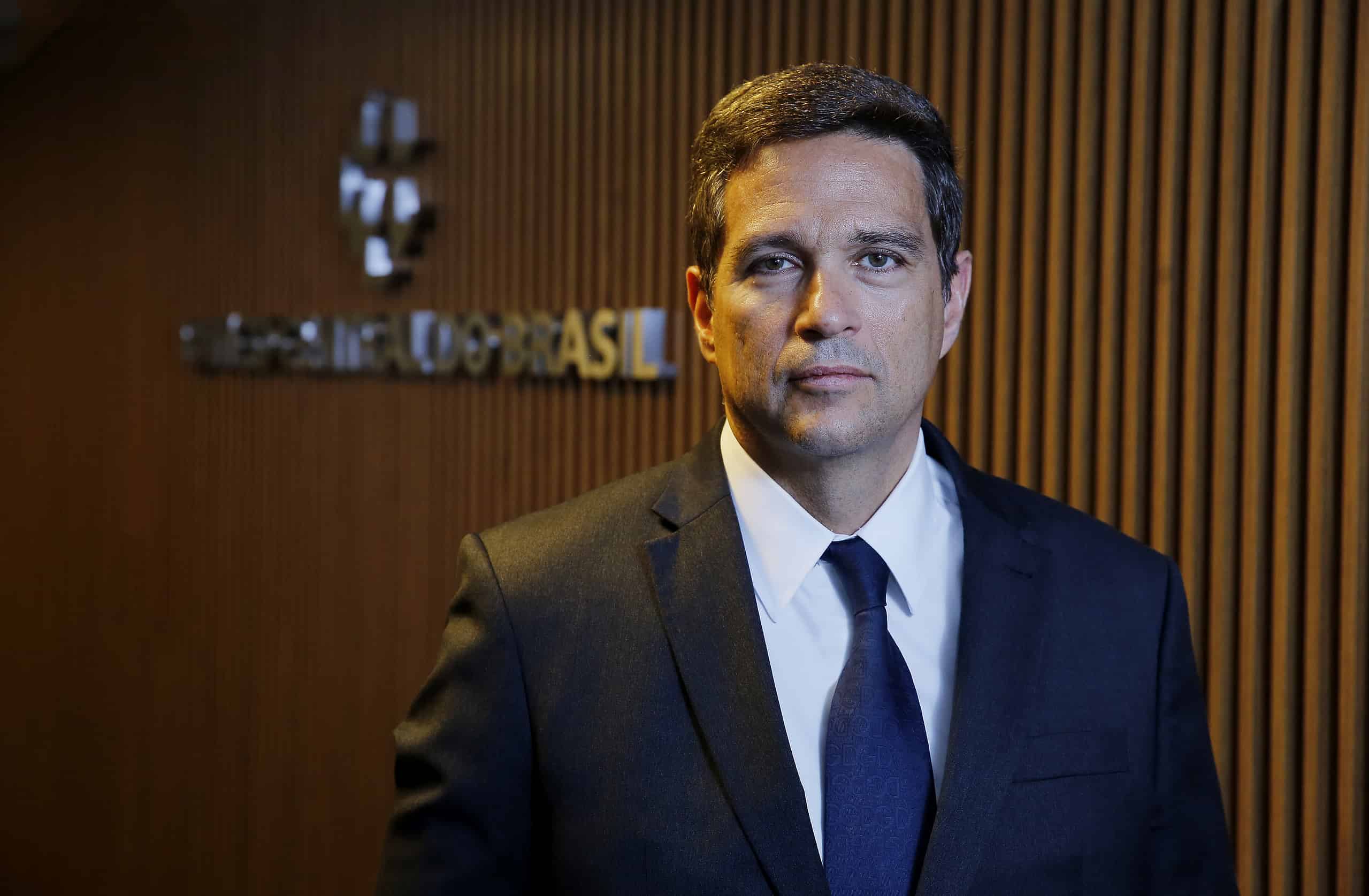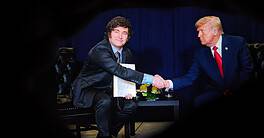Global Finance magazine interviewed Brazil Central Bank President Roberto Campos Neto, who has been at the helm since February 2019. In recognition of his leadership in managing Brazil’s monetary policy, Campos Neto earned an “A” grade in the magazine’s 2024 Central Banker Report Cards, announced in August. He also received an “A” in 2023’s report card.
With Campos Neto’s term ending December 31, President Luiz Inacio Lula Da Silva recently picked current Deputy Governor for Monetary Policy, Gabriel Galipolo, as Campos Neto’s successor. The Senate will vote on whether to confirm Galipolo to a four-year term, which start in January.
In this interview, Campos Neto shares his insights on the global economy, Brazil’s economic outlook, the resilience of Latin American economies, and the importance of central bank independence. Campos Neto discusses the challenges and opportunities in a world marked by economic uncertainty, inflationary pressures, and evolving global trade dynamics. He also provides an update on Brazil’s innovative financial initiatives, including the development of DREX, the country’s digital currency. This interview has been edited for clarity.
Global Finance: The global economy is facing a lackluster period, according to recent IMF comments. What is your view?
Roberto Campos Neto: In the global environment, central banks of major economies remain committed to bringing inflation back to its targets in an environment characterized by labor market pressures. Currently, the external environment is marked by less synchrony in monetary policy cycles across countries and uncertainty about the effects and extension of the easing cycle in the US.
Globally, we have made significant progress in the fight against inflation, but the job is not finished yet. Recently, US Fed chair Jerome Powell announced that the time has come to cut rates. Thus, the institution is expected to initiate the loosening cycle in the next meeting, in September. However, the length and depth of the cycle will depend on data. Looking ahead, an important variable will be the fiscal policy. In my view, the fiscal policy in the US will most likely remain under pressure after the presidential election. The fiscal rhetoric from the presidential candidates points to this scenario. To the extent that fiscal measures and other proposals, from tariffs to immigration policy, discussed during the election campaign have potential inflationary effects, it is difficult to imagine that interest rates in the US will return to pre-pandemic levels in the near future.
Recently, we have observed greater volatility in the global scenario. For some time, weak US data had been seen with optimism as it was an indication of a soft landing. However, even weaker economic data, pointing to a risk of a stronger-than-expected deceleration, contributed to higher volatility. In my view, these movements were a little too hasty. At the same time, in Japan, the undoing of carry-trade operations also provoked a strong adjustment in financial markets. This further contributed to the observed greater volatility in the external scenario.
One important question seems to be whether the economic slowdown will occur in an organized way or not. The baseline scenario points to a mild deceleration, in an orderly manner, but we should be aware of the risks. One important risk is related to global trade. In advanced economies, discussions on trade protectionist measures, especially against China, have gained momentum. For instance, the European Union recently substantially increased import tariffs on Chinese electric vehicles. In the US, proposals from the presidential campaign emphasize large tariff increases on China imports. In late August, the Canadian government announced a 100% tariff on electric vehicles imported from China and a 25% tariff on Chinese steel and aluminum. Other countries have also opened antidumping investigations against China.
Essentially, we are moving away from efficiency, and this may severely impact global trade and growth as well as inflation. Especially if we consider the apparent new Chinese economic model, less focused on domestic consumption growth and more on exports. It is difficult to estimate the impact of these protectionist measures, but a stronger slowdown in China should have a major effect on global activity, and potentially the biggest impact should be on emerging market economies.
Another source of concern is that, in a scenario of a stronger slowdown in activity, there is little room for economic policy, both fiscal and monetary. This happens because government debt is at very high levels globally and projected to rise. Critically, when combined with high interest rates, especially in advanced economies, this poses policy challenges and can drain liquidity from corporations, emerging market economies and low-income countries.
Likewise, the space for monetary policy is limited. Central banks have very large balance sheets, and many of them experienced meaningful losses from changes in the price of assets they had bought during the last tightening cycle. So, there is not much room for purchasing assets, as many central banks did in the recent past. Currently, the only instrument left for central banks is the traditional tool, i.e., interest rate policy. In my view, part of the recent bouts of market volatility are due to these risks to global growth and the market perception of little room for countercyclical economic policies in most countries should a stronger slowdown materialize.
Ultimately, in this new scenario of desynchronized policies, one important remaining challenge is to find a path to sustainable growth with low inflation and controlled fiscal accounts. In my view, a factor that could be key to achieving this path is the degree of coordination of global economic policies in the future.
GF: What are your thoughts on the importance of the independence of the central bank?
Campos Neto: I believe the autonomy of the BCB was one of the most important institutional developments in Brazil in the last few years. The autonomy allowed us to do the job we needed to do, for example, during the last elections. At that time, we managed the greatest rise in interest rates in an election year ever seen in emerging economies – from 2% to 13.75%, which proved essential to curb inflation in Brazil. We were actually able to bring about lower inflation than our peers, despite our long history of higher inflation than other countries in Latin America.
Of course, the autonomy of the BCB is recent, and it is natural that both the government and ourselves at the BCB are still adjusting to this new environment. However, I think eyes should remain on the benefits of this institutional advance: recollecting that preserving central banks’ independence is key to monetary policy credibility and inflation stability.
That said, we continue to fight to increase the scope of our independence, by including financial and administrative autonomy. These two dimensions are crucial for complete autonomy. A study by Tobias Adrian at the IMF asked independent central banks what aspect of independence they believed is the most important, and 74% of them said their financial independence was even more important than operational independence.
In this sense, we are working on an initiative in which the central bank would be financed through its revenues, like most other central banks. In this project, the budget still needs to be approved by Congress, and the BCB still needs to explain all its expenditures and the reasons for them. However, with financial independence the BCB should have enough money for technology and innovation, which is imperative.
At the same time, in our current framework, our human resources – hiring, firing and remuneration levels – depend on the government. However, doing innovation sometimes means competing with the financial sector for people. In the recent past, with Pix [Brazil’s instant payments system] and Open Finance, for example, we have lost people to the financial system. We need to be able to pay more competitively to retain people and expertise for other innovative projects. This touches both the administrative and financial autonomy that we seek.
GF: What are your expectations for the Brazilian economy over the next 6-12 months?
Campos Neto: In the last few quarters, monetary policy has succeeded in bringing inflation down, while still maintaining economic activity and a robust labor market. Headline inflation fell from a peak of 12.1% in April 2022, to 4.5% in July 2024. However, more recently, this disinflation trend has slowed, while various measures of underlying inflation are above the inflation target in recent releases. In fact, some volatile prices have ticked up recently, particularly food prices. But also, services inflation proved to be resilient, in part due to the strength of the labor market. Inflation expectations for 2024 and 2025 collected by market agents are currently de-anchored, at 4.2% and 3.9%, respectively, while the projections from the Monetary Policy Committee (Copom) stand at 4.2% and 3.6%. That is why the Banco Central do Brasil (BCB) decided to pause its easing cycle in June and has kept interest rates constant since then.
Turning to activity, GDP growth and employment figures have continuously surprised to the upside in the last years. This view has not changed in the more recent period and the dynamism of higher frequency indicators, such as of retail and services, reinforces the prospect of resilience in domestic activity and sustained consumption over time. The median of market agents’ expectations for GDP growth this year went up from 1.5% at the beginning of the year to 2.4% in the most recent data.
In the case of the labor market, current high dynamism is translated most notably into stronger than expected figures for the level of occupation and income. Unemployment rate forecasts have also been continuously shifting downwards: while at the beginning of the year market agents were expecting an 8.2% rate for the end of 2024, this number now stands at 6.7%.
Notwithstanding, market analysts expect a deceleration in activity in 2025. The median of market expectations for GDP growth next year stands at 1.86%. I also believe there will be some slowdown next year, driven by reductions in fiscal spending.
Summing up, the disinflationary process has slowed down, inflation expectations are de-anchored and current inflation levels are above the target. This happens in a context characterized by still strong economic activity, which makes inflation convergence to the target more challenging. In such a scenario, we have stressed that monetary policy should continue being contractionary for sufficient time at a level that consolidates both the disinflation process and the anchoring of expectations around the target.
GF: What is your view on the Latin American region’s economy?
Campos Neto: In recent years, Latin American economies have been surprisingly resilient, recovering faster-than-expected from the Covid-19 pandemic. Growth in the region reached 4.1% in 2022, but moderated to 2.7% in 2023, partly due to the partial unwinding of fiscal support and more restrictive policies since late 2022, according to the IMF.Many economies are now operating close to potential growth.
During the Covid-19 pandemic, Latin American central banks were the first to tighten monetary policy to control the build-up of demand pressures and secondary effects of supply shocks. The early and prompt monetary tightening by the region’s central banks supported regional asset prices and capital flows, even in the face of rising interest rates in advanced economies (AEs).
As the region began to experience a gradual disinflation process, main local central banks initiated a monetary easing cycle in 2023, even before central banks in AEs.
More recently, the disinflation process has lost momentum and overall inflation trends have started to diverge from country to country. The recent uptick in headline inflation in some countries has been mainly due to the rise in food and energy prices, with core inflation remaining relatively stable. There is no sign of upward pressures on international prices of agricultural and energy commodities, which could alleviate domestic inflation pressures in coming months. However, inflation expectations remain above targets in some countries.
Looking ahead, improvements in some underlying structural factors are crucial for countries’ future growth. Overall, productivity in Latin America is low, especially compared to Asian emerging market economies. Investment rates are also low. At the same time, the region faces huge challenges to improve infrastructure, reduce poverty and advance the energy transition. In this context, it is imperative to boost potential growth and increase productivity. Improving the business environment, attracting foreign investment and developing labor skills are crucial steps to achieve more sustained, long-term growth.
In this realm, fiscal policy is another important issue. With public debt at relatively high levels in many countries, it is important that policymakers adhere to credible long-term fiscal policy frameworks and commit to rebuild fiscal space, reducing the cost of financing for the private sector.
On the positive side, the current situation in the global economy brings opportunities for the region. Historically, the region has been, from a geopolitical point of view, a stable and credible partner, with good relations with the world’s main economies. In addition, over the last years Latin American countries have made progress in strengthening free markets, enhancing the rule of law, respecting property rights, and improving central bank independence. These advancements enable the region to benefit from recent trends such as nearshoring and friendshoring. Therefore, the current challenge for countries is to promote further advances in structural reforms to insert themselves in a more relevant way in the evolving global production chains.
GF: Can you talk about your country’s digital currency DREX and its status of development and potential future?
Campos Neto: Over the last few years, the BCB has been implementing several innovation projects within our agenda of structural reforms of the financial system, known as Agenda BC#. DREX is one of the four fundamental blocks of this agenda, which also includes Pix, the Open Finance initiative, and the currency internationalization.
The BCB has been developing DREX with the aim of tokenizing the economy. Such a strategy will allow obtaining benefits in three dimensions. First, DREX will enable greater banking efficiency in risk management, collateralization, financing, asset management, data analysis, and settlement, as well as allowing new types of digital financial products and services. The second dimension of benefits is related to efficiency in digital payments. Tokenization initiatives such as DREX work as a bridge to the De-Fi environment and brings decentralized finance to the regulatory perimeter. Besides that, it also allows greater efficiency in financial intermediation, through programmable digital services that use smart contracts. With smart contracts, transactions are completed automatically when predetermined conditions occur, adding security to all parties involved in the business. A third dimension of benefits are improvements in the contract registration process, since DREX will allow the registration of legally valid contracts through programmability.
DREX is currently in a pilot phase, focusing particularly on ensuring the privacy of personal data. The pilot is working well, but we still have some issues related to the scalability. We do not yet have the technology that allows us to have a system that transacts hundreds of millions of trades a day with the desired level of privacy. Central Bank Digital Currency technologies are at the frontier of knowledge and some technological issues such as privacy versus scalability are still open problems. Recently, the pilot has entered a new phase that includes the selection of new participants and the inclusion of new assets in the platform, such as corporate bonds and bonds issued by financial institutions.
To conclude, it is important to emphasize that these innovations are related to financial inclusion. At the BCB, we believe that innovation projects like DREX not only bring efficiency and modernization but are also one of the most powerful tools to promote financial inclusion.




